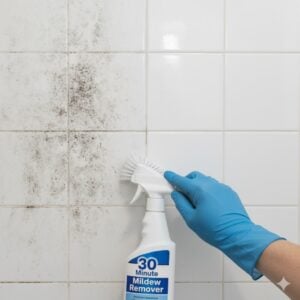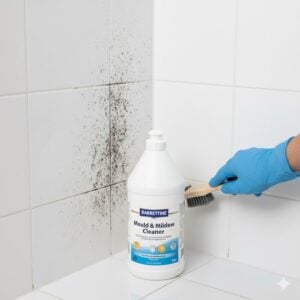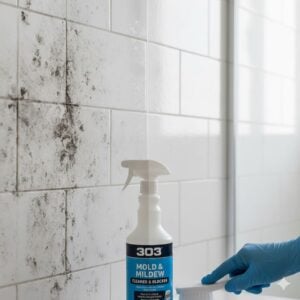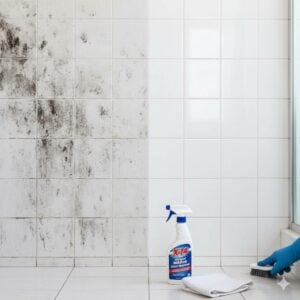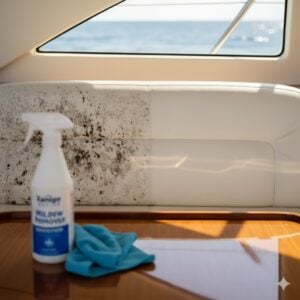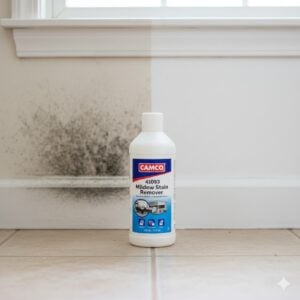Mildew on the ceiling is more than just an ugly stain—it’s often a warning sign that your home has excess moisture and poor ventilation. In humid environments like the UAE, especially in places like bathrooms, kitchens, or laundry areas, mildew can appear quickly and quietly. If left untreated, it can damage surfaces, release allergens, and even lead to more dangerous mold growth.
In this article, we help you understand why mildew forms on ceilings, how to spot the early signs, and what actions you can take to clean it, prevent it, and protect your home in the long run.
Table of Contents
Toggle1. What Causes Mildew on Ceilings in UAE Homes?
Mildew thrives in warm, humid, and stagnant conditions—exactly the kind of environment found in many UAE households due to heavy AC use, high outside temperatures, and closed interiors. Bathrooms and kitchens are the most common problem zones, especially if they lack exhaust fans or natural ventilation.
Some specific causes include:
- Poor Ventilation: Without enough airflow, steam from showers or cooking lingers in the air and settles on the ceiling.
- Condensation: Cold surfaces, like AC ducts or ceiling corners, attract moisture, especially in air-conditioned rooms.
- Water Leaks: Leaky pipes in ceilings or roof leaks during rain can slowly create a breeding ground for mildew.
Ceilings painted with flat or non-washable paint are more prone to mildew, as the surface holds onto moisture and dirt, giving mildew spores a place to land and grow.
2. Signs You’re Dealing with Mildew (Not Just Dirt)
Mildew often looks harmless at first, which is why it goes unnoticed for weeks. But here’s how you can tell it’s mildew and not just surface grime:
- Color: Mildew usually appears as light grey, off-white, or yellowish patches. Over time, it darkens and turns brown or black.
- Texture: The affected area may feel powdery, slimy, or fuzzy to the touch.
- Smell: A musty or slightly sour odor is common when mildew is present.
- Growth Pattern: Mildew often spreads in a blotchy or speckled pattern, rather than one large stain.
If the growth is black and spreading fast, it may have transitioned from mildew to more harmful mold—at that point, professional removal is strongly advised.
3. How to Safely Remove Mildew from Your Ceiling
Removing mildew can be a DIY task if it’s caught early. But be warned—some common methods may worsen the problem if done incorrectly. Here’s the safe way to handle it:
- Wear protection: Use gloves, a mask, and protective eyewear before you begin cleaning.
- Mix a cleaning solution: Combine one part white vinegar with two parts warm water in a spray bottle. For stronger cases, you can use hydrogen peroxide (3%) or a mold-specific cleaner.
- Spray the affected area: Let it sit for at least 10–15 minutes to break down the mildew.
- Scrub gently: Use a soft sponge or brush to avoid damaging the paint or spreading spores.
- Rinse and dry: Wipe the area clean with a damp cloth and dry thoroughly with a towel or fan.
Avoid bleach unless absolutely necessary, especially on painted ceilings. It can discolor the paint and is less effective on porous surfaces. And never paint over mildew—trapping spores under paint only makes them spread faster underneath.
4. How to Prevent Mildew from Returning
Once you remove the mildew, the next step is keeping it away for good. Prevention is all about controlling moisture and air circulation:
- Improve ventilation: Install or upgrade exhaust fans in bathrooms and kitchens.
- Open windows when possible: Let fresh air in to reduce trapped humidity.
- Use a dehumidifier: Especially in rooms that stay damp even with ventilation.
- Insulate ceilings: Proper insulation can prevent condensation build-up around ducts and AC vents.
- Switch to mold-resistant paint: These paints contain antimicrobial agents and are perfect for humid areas.
Regularly inspect areas around the ceiling, especially in corners or near windows and AC vents. Early detection makes a huge difference in controlling mildew before it becomes a serious health or repair issue.
5. When to Call the Professionals
If mildew keeps coming back, the ceiling feels soft or damp to the touch, or black spots start appearing, it’s time to call in professional remediation. This likely means there’s deeper moisture trapped in the structure—something that DIY cleaning can’t solve.
We offer complete mildew and mold removal in all Emirates, using municipality-approved, eco-friendly methods. Whether your ceiling needs inspection, repair, or preventive treatment, we can help. Just click the contact button on the right-middle of this post to get started—no obligation, just clear guidance from experts who know UAE homes inside out.
Conclusion
Mildew on the ceiling may seem minor at first, but it can quickly grow into a costly problem if ignored. By understanding the causes, acting early, and taking preventive steps, you can keep your home clean, safe, and mildew-free—even in the UAE’s humid climate.
And if you need support, we are just a click away to provide expert inspection and lasting solutions.








